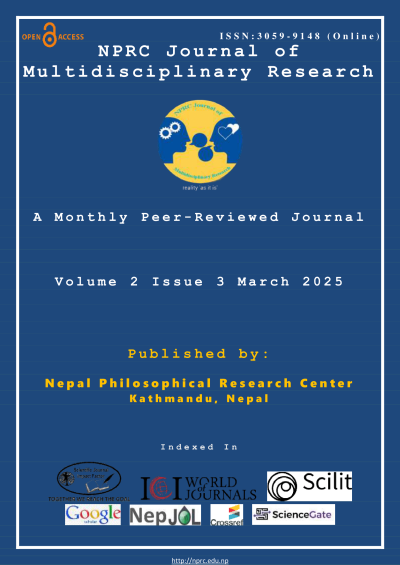Grassland Habitat Ecology of Bengal Florican: Preferred Ecological Adaptation in Koshi Tappu Wild Life Reserve
DOI:
https://doi.org/10.3126/nprcjmr.v2i3.76579Keywords:
Bengal florican, Houbaropsis bengalensis, Koshi Tappu Wildlife Reserve, threatened speciesAbstract
This article presents an investigation into the pivotal role of ecological habitat management in the preservation of the Critically Endangered Bengal florican (Houbaropsis bengalensis). The study was conducted in the Koshi Tappu Wildlife Reserve and its Buffer Zone area from May 2022 to October 2023. The primary aim was to employ indigenous knowledge for the restoration of degraded grassland habitat and subsequently revive the population of the Bengal florican. Findings indicate that the grassland habitat crucial for the Bengal florican is contingent upon specific grass species, association with grazing herbivores, proximity to water bodies, availability of grains and insects for sustenance, minimal human disturbances, and a partial distribution of bushes within the grassland. This article integrates empirical data derived from population censuses, monitoring efforts, and surveys conducted among observers and local residents within the Buffer Zone of Koshi Tappu Wildlife Reserve.
The synthesis of this evidence underscores the potential for safeguarding and conserving the Bengal florican habitat to mitigate the declining population trend observed within the KTWR. This study contributes to the growing body of knowledge aimed at informing effective conservation strategies for the Bengal florican, thereby offering insights into the broader realm of endangered species management and ecological preservation.
Downloads
Downloads
Published
How to Cite
Issue
Section
License
Copyright (c) 2025 The Author(s)

This work is licensed under a Creative Commons Attribution-NonCommercial 4.0 International License.
This license enables reusers to distribute, remix, adapt, and build upon the material in any medium or format for noncommercial purposes only, and only so long as attribution is given to the creator.





